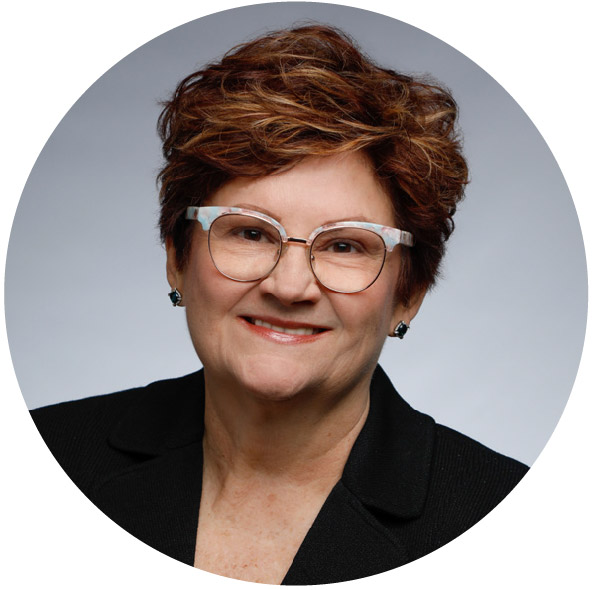By Mary Muñoz, Senior Managing Director, Ziegler
The last dozen years have included some stressful times for senior living providers. The Great Recession of 2008 took a toll on occupancy, devastated the real estate market for independent living providers, and led to a number of distressed situations throughout the sector.
 The pandemic came along just as many were feeling somewhat recovered from the Recession and beginning to entertain growth or expansion. COVID-19’s impact was across the board, but powerfully hit the skilled nursing segment, with caregiver burnout and employees leaving the industry. The Recession and COVID-19 were not controllable events, but the organizations worst impacted were in many cases the least-prepared and least-healthy organizations. What can providers due to recognize business stressors and to be well-positioned and healthy? And if trends are irreversibly negative, what options are available?
The pandemic came along just as many were feeling somewhat recovered from the Recession and beginning to entertain growth or expansion. COVID-19’s impact was across the board, but powerfully hit the skilled nursing segment, with caregiver burnout and employees leaving the industry. The Recession and COVID-19 were not controllable events, but the organizations worst impacted were in many cases the least-prepared and least-healthy organizations. What can providers due to recognize business stressors and to be well-positioned and healthy? And if trends are irreversibly negative, what options are available?
EVALUATING ORGANIZATIONAL HEALTH
Healthy organizations have many of the following characteristics in common:
Solid financial profitability, in aggregate and by business line. If there is a business line/level of care that is losing money, a source of supplemental income or philanthropy to subsidize that loss should be identified. Diverse revenue streams can also help mitigate underperformance in a particular service line. Cash reserves should be on hand for reinvestment and “rainy day” funds, appropriate to the business line(s) and expense profile.
Solid and defensible market position. Affordable housing buildings can operate at or near break-even, because they can count on always being highly occupied. Market rate senior living cannot count on full occupancy, and it needs to be located in a market where there is demand at needed price points. When demographics in a market change dramatically, organizations must adjust or can go out of business. For example, three of four retirement communities in Alhambra closed or were sold several years ago, after demographics in that market shifted significantly.
Physical plant updated. For providers in residential living/care, buildings are capital-intensive. One way to measure age is the CARF Average Age of Plant ratio, which industry lenders like to see no higher than 10 to 12 years.[1] Customized capital asset replacement studies are an effective tool for identifying deferred maintenance and establishing a schedule for capital replacement. Various specialty consultants provide these studies; seek one with expertise in your business line(s).
Solid and flexible strategic plan. In addition to evaluating today’s operations, organizations need to have an eye on the future and a vision for how the organization should look in five to 10 years to be responsive to expected industry change.
Strategic Leadership. A sophisticated Board with relevant areas of expertise is invaluable and typically will ask critical questions regarding financial and operation performance.
Succession plan. A common element in many affiliations and sales Ziegler has facilitated is a retiring CEO with no identified successor. As the workforce contracts, succession planning is important earlier rather than later, and pro-active Boards keep this goal on their agendas.
Debt capacity for the future. Successful organizations keep “dry powder” (cash reserves) for reinvestment in physical assets and execution of strategic plans.
AFFILIATION vs. SALE vs. OUTSOURCING MANAGEMENT
Perform a wellness check on your organization by working through the bullet points above. Are there systemic profitability issues as a result of occupancy problems, staffing concerns, expense creep, failure to manage the revenue side through fee increases, increased competition that looks better/performs better, or other factors? How does your physical plant measure up to the competition’s? How well is your Board setting goals and planning for the future?
If you determine that your organization is not healthy and does not have the means to repair its issues alone, there may be an opportunity to outsource management, or to join forces with another organization in order to become stronger together. Affiliating with another organization can take many forms; the nuances are numerous and should be explored with experts, but in short:
An affiliation is the structure often used by nonprofits coming together under a common corporate governance structure. In this scenario, one nonprofit steps in as sole member of another. Senior management and board members may or may not transition with the assets. Identity and mission are often preserved, and operations shored up. Sometimes no cash changes hands; sometimes there is a commitment by the new sole member to invest in its new affiliate in some fashion. Affiliations usually happen pre-emptively before an organization declares bankruptcy.
An acquisition is the purchase of one company by another at deemed fair market value. Acquisitions involve cash payments most often (or assumption of debt, or a combination of cash and assumed debt). The acquirer may or may not buy all assets and liabilities, including resident contract liabilities (regulators and the Attorney General weigh in). If a situation has progressed to bankruptcy prior to a sale, the bankruptcy court governs decisions on various liabilities, including resident liabilities; creditors often are forced to take less than 100 cents per dollar of debt. It is important to note that tax-exempt status must be considered in any acquisition of a nonprofit by a for-profit.
Regardless of whether your organization considers an affiliation or a sale, legal advice is an essential and crucial part of the process. If your organization is struggling, act early to preserve your options and to have as much “say” or “control” over the process as possible. There are many resources available through your attorneys, your investment banker and other consultants.
[1] Note that a provider’s policy on expensing vs. capitalizing capital expenditures can significantly impact the Average Age of Plant ratio.




